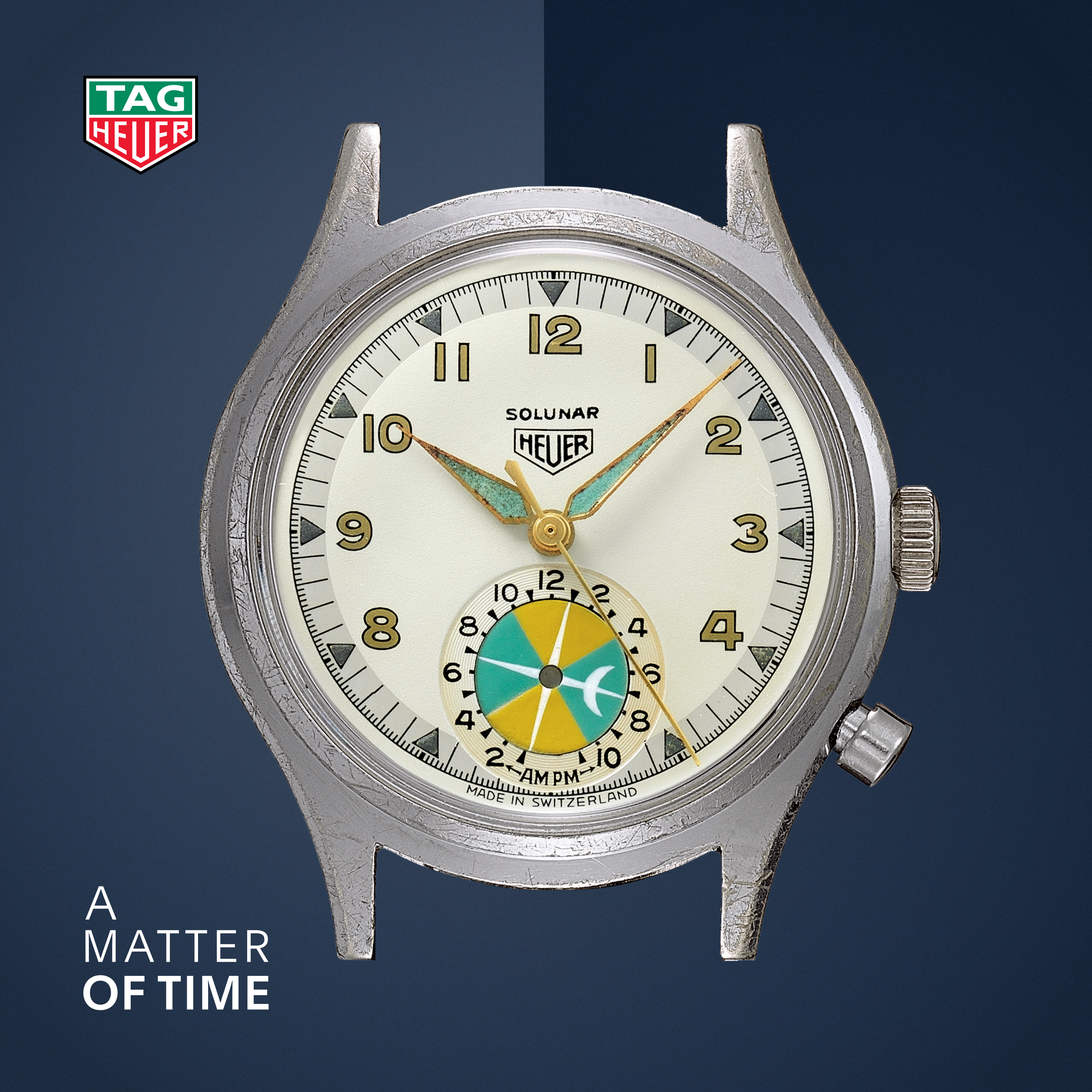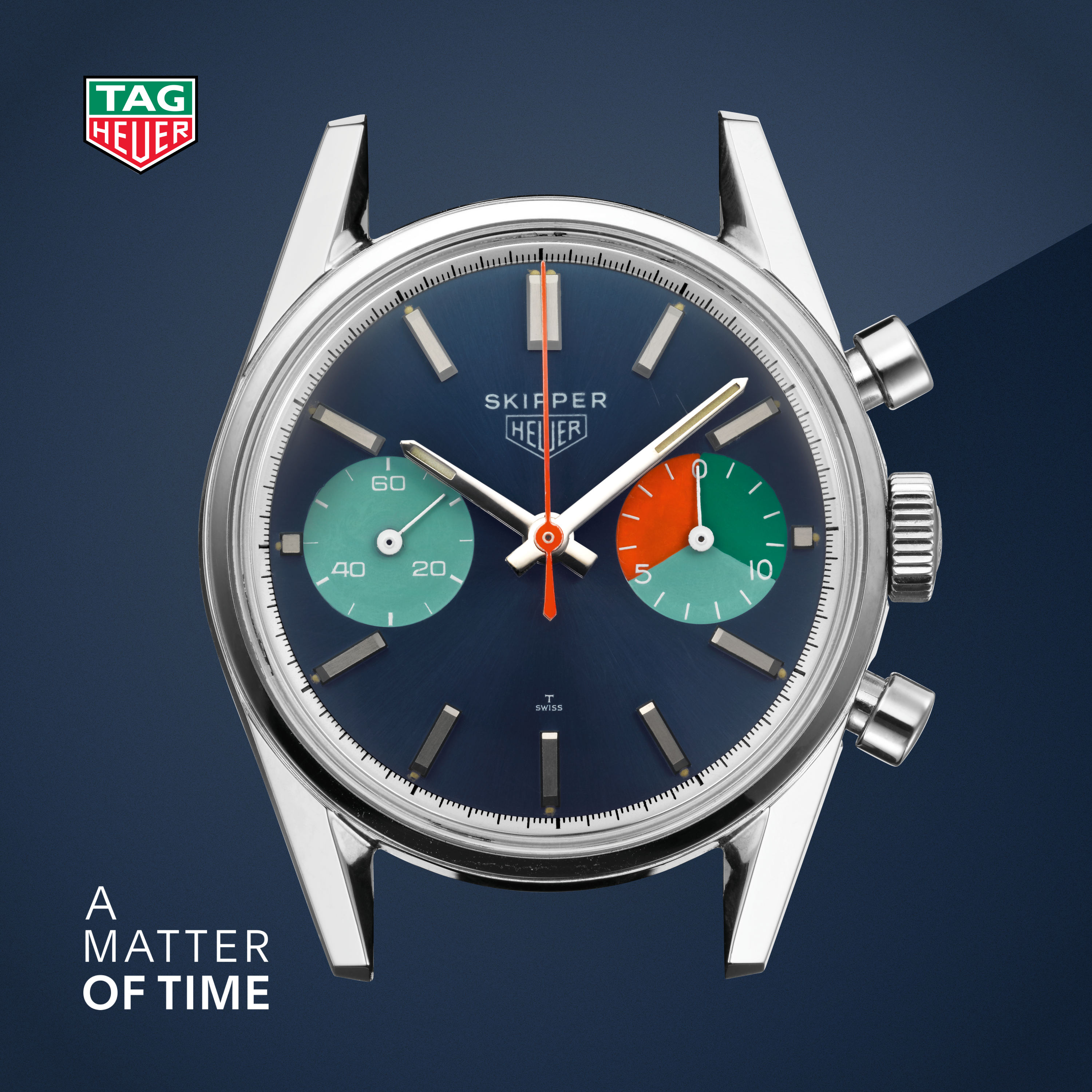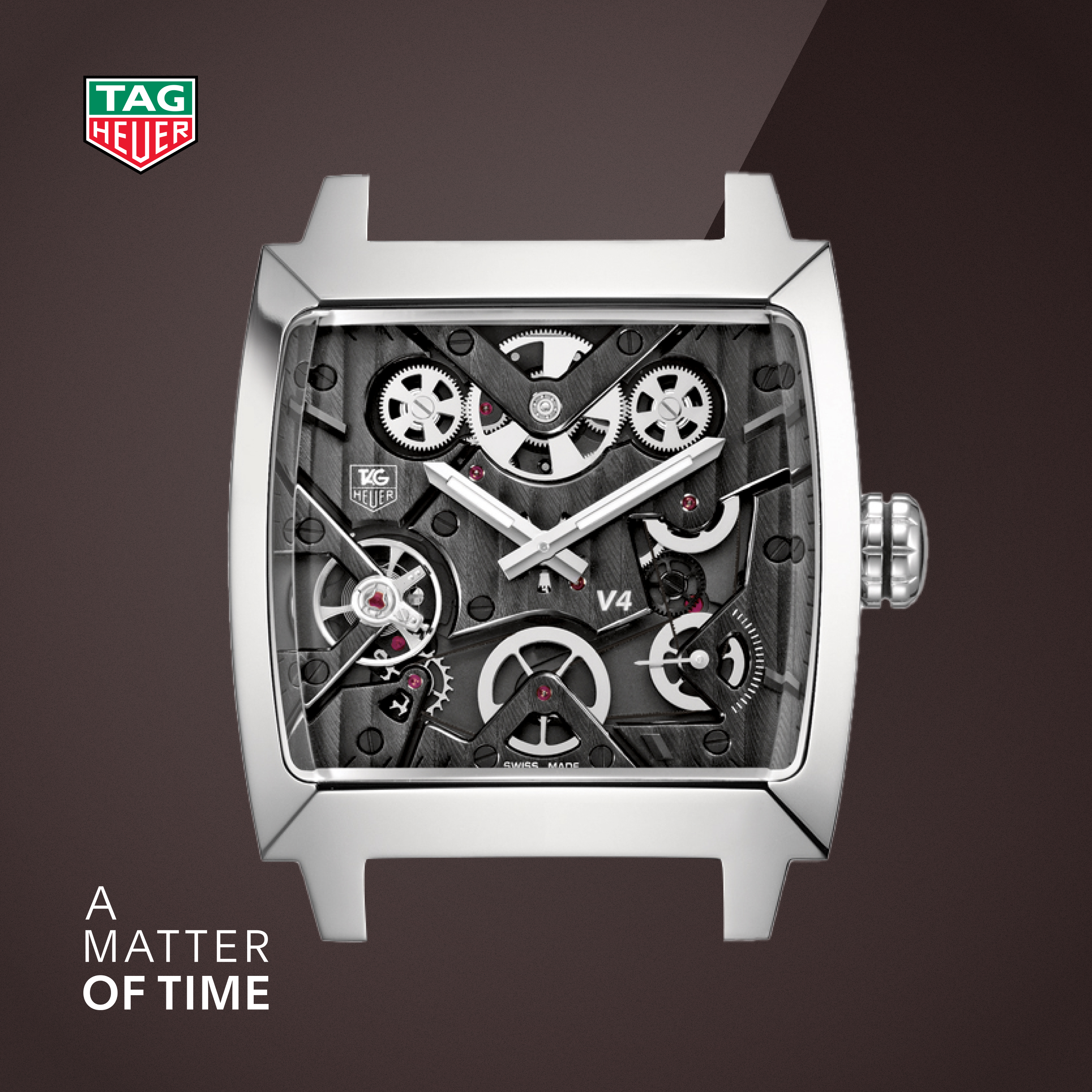Episode Transcript
[00:00:00] Speaker A: You welcome to a matter of time.
[00:00:04] Speaker B: A podcast by Tag Hoyer. I'm your host, Nicholas Beebeck, heritage director at Tag Hoyer. It's the season finale, so we've decided to wrap up this epic story of the Carrera with something different. To celebrate the collection's 60th anniversary, we've released a special book titled Tag Hoyer Carrera the race never stops. Action. This isn't just any book. It's a time machine that takes you through the captivating history of the Carrera. Over six chapters, each representing a decade in the life of the collection, the book uncovers the enduring legacy of the Carrera. To give you a taste of what to expect from the book, I'm going to share three extracts from the Carrera Panamericana in Mexico to Sebring raceway in Florida, onto Maranello, the home of Ferrari in Italy. Each of these extracts explores how the Carrera's history was written on the racetrack.
Ready? Let's get the show on the road.
We turn the clock back to the 1950s. The stage is set for a legendary and notorious road race, the Carrera Pan Americana. This is where the story of the Carrera begins. Chapter one the 1950s.
[00:01:19] Speaker A: It'S around 07:00 a.m. On Friday the 19 November 1954. We're in Mexico. Hans Herman is sitting in the driver's seat of a Porsche 550 spider. Considered by some to be among the most beautiful competition cars ever produced is chassis number 554, and it's fitted with the advanced double overhead cam engine recently developed by Ernst Furman, a technological tour de force hiding within the elegant, low slung silver aluminium bodywork. Man and machine are in the capital city of Chiapa state in the southern part of Mexico, and the recently applied, hand painted racing numbers and sponsors logos are glinting in the early morning sun.
The scrutineers'lead seals at the end of the wire loop, securing them to the steering column to prove that the car has passed its technical inspection. Vibrate as Herman revs the engine, encouraging the oil to circulate and warm. Hans feels the usual mix of excitement and trepidation as he lines up at the start of the first day of the Carrera Pan Americana. Dawn has given way to the rising temperature, and Hans is eager to start moving, to have the fresh air blowing against his face and clear the perspiration forming across his brow. As the designated start time approaches, he holds the engine at 6000 rpm. He drops the clutch as the flag is waved and the iridescent, lightweight sports car leaves the crowd of spectators in a cloud of dust, the engine note becoming fainter as he passes round the first corner of one of the most legendary and dangerous road races ever created.
Initially conceived in the late 1940s by the mexican government to promote the newly opened transamerican highway stretching from the northern to the southern borders of the country, the first running took place in 1950. An instant hit. It would soon become a prime destination for the best manufacturer in the world to prove the reliability and speed of their cars as well as the bravery of the drivers they selected.
Given ever increasing speeds, accidents were inevitable feature of the Carrera, as the Pan Am would simply be called by some. The result was a race notorious for its danger, which would eventually lead to its demise. The 1954 edition, in which Herman claimed class victory with a time of 19 hours, 32 minutes and 33 seconds on the 3070 kilometer, roughly 1907 miles course for an average speed of 157.2 km/hour was fated to be the last running.
[00:03:45] Speaker B: Of the original race.
[00:03:47] Speaker A: The tales of bravery, strength and determination the Carrera Pan Americana engendered would eventually find their way to the man who would lend the name of the legendary road rally to one of the most celebrated and iconic wristwatches ever created. Before that could happen, however, he would first have to join the family business and reinvent the way that it operated.
Thursday the 5 March 1959 somewhere over the Atlantic Ocean, Jack and his uncle Hubert are aboard a new Boeing 707 operated by American Airlines, their first time experience a jet engine powered aircraft, allowing them to fly directly from Paris to New York. The family members have just finished the bottle of champagne the senior Hoyer had ordered to celebrate a new star in the great us of a, and they're making themselves comfortable for the flight ahead. Reflecting on what the future might hold. Since graduating, Jack has embedded himself in the family business, compiling reports and assessing the efficiency of the various units.
Based on his insight, the company has stopped making time only wristwatches where the market is too competitive, driving margins lower, and instead shifted its focus to chronograph wristwatches, stopwatches and dashboard instruments. Another keen observation Jack made at this time, after assessing the data provided by the Federation de la Industry, or Oligia Swiss, was that the brand clearly was underperforming in the US. In most world markets, stopwatches bearing the Hoyer Shield accounted to 20% to 25% of the market, whereas in the US they stood at just two to 3%. It was time for the family business to set up a subsidiary in this key market, marking the beginning of world domination for the modest manufacturer from Bien, the company's 1958 financial performance of 1.7 million swiss francs in turnover, a 20% drop from the previous year, had nearly been enough to put Jack off of joining the company. However, a capital injection provided by the sale of the family estate in Burn, totaling around 400,000 swiss francs, close to 2 million francs today, along with the promise that he would be given responsibility over the new us business, rekindled his interest in working alongside his family.
The pair's first order of business on arriving in New York was to inform the existing agent, Louis Einstein, and brothers that the relationship was over and to go through the same process with Jimbo's, the company's distributor in Canada. There was some consternation, and Eisenstein insisted they buy back all the remaining stock, nearly wiping out the cash reserves. But overall, the decision was clearly understood. Hoyer would henceforth oversee the business in North America. On 16 March 1969, in the New York offices of the legal firm Riggs ferry and gear, the documents were duly signed to register Hoyer Time Corporation, or HTC for short in the US.
[00:06:42] Speaker B: Let's switch gears and race into the 1960s. Second extract takes us to the Sebring raceway in Florida. It's here that Jack Hoyer first heard about the mythical mexican road race that would inspire the Carrera.
Chapter two the 1960s.
[00:07:00] Speaker A: Saturday, the 24 March 1962 at the Sebring Raceway in Florida. Jack Hoyer has flown from New York to Palm beach and rented a car to make the two hour drive to the circuit. Standing in the pits of the north american racing team, the famed outfit operated by the charismatic Luigi Chinetti, who himself has competed in twelve consecutive 24 hours races of La Ma and is Ferrari's importer for the United States. There is no shortage of important drivers among the field, including Joe Bonier, Phil Hill, Bruce McLaren, Roger Pensk, Dan Gurney, Briggs Cunningham, Inez island and the great Sterling Moss. All campaigning in the hottest machinery of the era, such as the Porsche 718 RS 60, the Ferrari 250 GTO and the legendary Testerosa. The rest of the entrance consists of exotica from famed european marks, notably a pair of Porsche 356, B Carrera GTL abarts and Count Volpe's famous Ferrari 250 GT short wheelbase, for which it would be the last race before being converted into the famous bread van. Among them is an unassuming Austin Healey subbring sprite, driven by a breakout Hollywood actor known as Steve McQueen. But it is the number 34 Ferrari Dino two four six SP blazing around the course. In its Rosso course, a painted, lightweight aluminium bodywork crafted by caratori Fatuzi that attracts Jack's attention.
The 22 year old mexican racing driver Pedro Rodriguez is at the wheel with the overall lead in the early stages of the race, setting progressively faster and faster lap times and securing the record for the race.
Unfortunately, an engine failure not long afterwards forces a retirement co driver for Ferrari's first mid engine sports car. With Pedro is his younger brother, Ricardo, two years Pedro's junior. Ricardo is no less respected in the world of international racing. Meanwhile, watching over their son's blossoming racing careers are the boys'parents, Pedro and conceptsion. Jack is technically present at Sebring as a guest of the sports Park Car Club of America, having lent the official timing equipment to record the results of the race. But he takes the opportunity to scope out the crowd, realising they are ideal customers for Hoya's stopwatches, wrist chronographs and dashboard timers. And although the weekend should ostensibly be about business, Jack cannot help but talk to the parents of Pedro and Ricardo. In the course of the conversation, they mention how grateful they are that the boys were not born a few years earlier. Otherwise they would have been old enough to compete in the Carrera Pan Americana when it was run between 1950 and 1954.
They regale Jack with stories of the race. Its danger, its passion, its ability to test drivers and machinery, the drama of the route, the sweetness of the victory after thousands of kilometres throughout Mexico.
All the while, the word rings in Jack's ear. Carrera. Carrera. Carrera. The perfect connotations for a brand such as Hoya. And soon, the name of its next great racing chronograph.
[00:10:01] Speaker B: The final extract takes us to Maranello, Italy. Here, at the spiritual home of Ferrari, Hoya forged its indelible connection to the upper echelons of motorsport. A connection that would last for decades. Chapter three the 1970s Wednesday the 7.
[00:10:18] Speaker A: April 1971, Maranello, Italy. After the long drive from Bien to Foyerano Moderna in the company's Porsche 911, a somewhat sacrilegious act given their destination. Jack Hoya and Francois Prance are glad to find themselves flooded with glorious sunshine as they set out to complete the most important negotiation in the company's history.
Unbeknownst to them, it represents a moment that will lay the foundations for the future of sponsorship deals between luxury brands and motorsport, something that is taken for granted nowadays. But in 1971 was uncharted territory.
A series of fortuitous events has led the two man team from Hoya to arrive at the home of Ferrari on this fateful spring day. First, a Hoya manager has spotted Claire Regatzerni, the Ferrari Formula one driver, having lunch with an executive from Longine at a restaurant in St Emie.
Second, the team's principal for Scudaria Ferrari at the time, Peter Shetty, happened to be from Basel and a member of the Swiss University ski club with Jack, who was able to make contact and glean the motivations for the meeting. Third, Hoyers presented the first timing device, capable of one 1000th of a second accuracy just a few years earlier, and were in the process of developing a product line further. And last but not least, the electronic engineer overseeing the project, Francois Prance, was fluent in Italian, considerably simplifying communication with the Scuderia when he visited the workshop in December 1970.
Up until Jack's arrival in Maranello, there has been a stalemate in discussions. Following the assessment of Prance, Hoyer has offered to provide the team with the state of the art center graph. A device especially develops for the needs. At proposed cost of 35,000 francs.
Enzo Ferrari had refused point blank to pay for anything necessitating that one CEO make the pilgrimage to see the other and come to an arrangement. Which brings us to the long drive we described above.
The first meeting in Maranello takes place with Piera, Lady Ferrari, Enzo's son, from his relationship with Lena Lardi, during which it was agreed that Hoya would provide the centigraph together with an operator free of charge, in exchange for the Hoya logo in a prominent position on the front of the Ferrari Formula one cars. All appear to be in order and agreed. So the gentleman head to Piero's office to that of Il commandant. As Enzo is widely known within Ferrari, Enzo makes it clear that there is a final hurdle to overcome, saying racing drivers today are so expensive.
Hoyer is to pay each of the principal drivers 25,000 francs a year, in exchange for which they will wear the Hoya logo on their racing suits. Jack, thinking fast, says that the drivers will also need to visit the company's factory in BN to be presented with a solid gold Carrera automatic chronograph. With the terms agreed by all, Enzo signs the contract using his distinctive violet ink and a celebratory lunch is held at the restaurant Il Cavalino, accompanied by Lambrusco and Enzo's colourful jokes.
[00:13:23] Speaker B: Thank you for listening. We hope you've enjoyed exploring the history and heritage of the tag Hoyer Carrera. Whether you're a seasoned collector or an enthusiast. Tag Hoyer Carrera, the race never stops is an essential reference. It stands out with its exclusive Carrera catalog, a treasure trove showcasing the most significant models from 1963 to today. The catalog is packed with stunning photographs and all the essential details about the Carrera, including movement, types, release dates, nicknames and sizes. You can find tag hoy Carrera the race never stops in tag Hoya boutiques and selected bookstores around the world. If you've enjoyed a matter of time, don't forget to give us five stars and subscribe wherever you get your podcasts. I'd also love to hear your thoughts.
[00:14:05] Speaker A: About the Carrera in the comments.
[00:14:07] Speaker B: You can find more about Carrera and our new releases on the edge magazine at magazine tagoy.com. Until next time, it's goodbye from me. Nicholas Bieberg.


